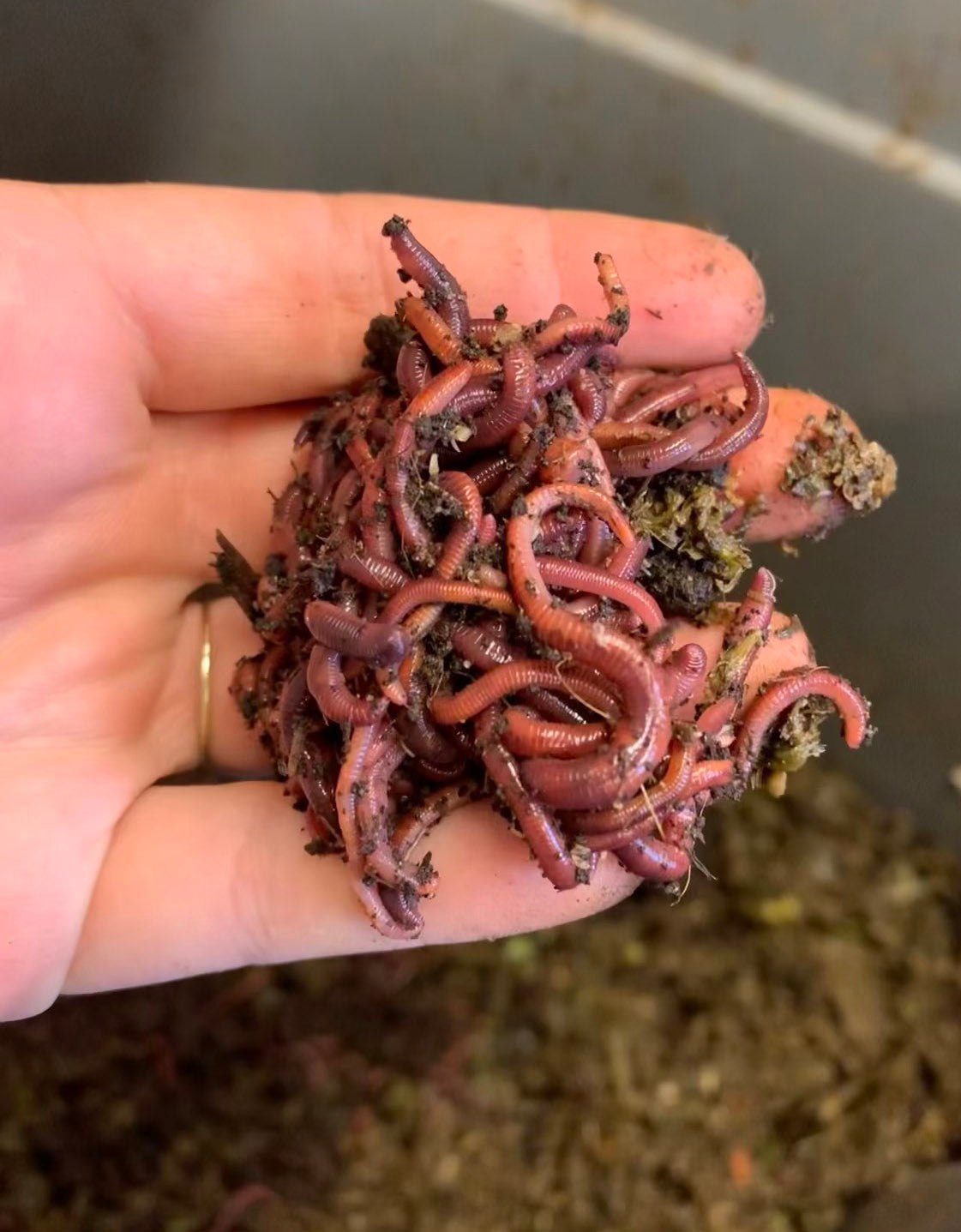Find the Best Products for Lawn Care with Red Wiggler Express for Thriving Lawns
Find the Best Products for Lawn Care with Red Wiggler Express for Thriving Lawns
Blog Article
How Red Wigglers Can Transform Your Composting Experience
The combination of red wigglers into composting techniques provides a transformative technique to lose administration and dirt enrichment. Recognizing the specific requirements and benefits associated with maintaining a flourishing worm population is important for optimizing their possibility.
Advantages of Red Wigglers
Red wigglers, clinically called Eisenia fetida, are a foundation of reliable composting systems due to their amazing capacity to decay raw material efficiently. These worms master transforming cooking area scraps, backyard waste, and other organic products right into nutrient-rich compost, typically referred to as worm spreadings. Lake Hickory Bait. This process not only reduces land fill waste yet likewise adds to lasting horticulture methods
One of the key benefits of red wigglers is their high reproduction rate, allowing them to inhabit a composting atmosphere rapidly. This quick reproduction boosts disintegration prices, resulting in faster garden compost production. In addition, red wigglers flourish in a varied series of problems, making them adaptable to numerous composting arrangements.

Establishing Your Worm Bin
(Lake Rhodhiss Bait)To produce an efficient worm container for composting, mindful attention should be provided to its layout and environment. A perfect worm container need to be built of products that are durable yet permit essential airflow, such as plastic or wood. The size of the container can differ, but a volume of around 1 square foot per extra pound of worms is a great starting point.
Make sure that the container has drainage holes to stop water buildup, which can lead to anaerobic conditions harmful to the worms. Furthermore, incorporating ventilation holes will certainly help maintain appropriate humidity levels and oxygen flow.
Next, it is important to provide bedding for the worms, which can consist of shredded paper, cardboard, or coconut coir. This bedding not only offers a habitat for the worms however also help in wetness retention.
Placement the worm container in an area that keeps a temperature level series of 55-77 ° F(13-25 ° C) to enhance worm activity. Prevent putting the bin in direct sunshine or severe temperatures. By complying with these guidelines, you can develop a helpful setting for red wigglers, enhancing the efficiency of your composting process.
What to Feed Your Worms

(Red Wiggler Express)Red wigglers particularly delight in soft, moist foods like watermelon peels, cucumber peels, and banana peels. Nonetheless, it is critical to avoid feeding them citrus fruits, onions, and garlic, as these can be destructive to their health. In addition, prepared foods, dairy items, and meat must be strictly avoided, as they can bring about smells and bring in insects.
To maintain ideal conditions, it's recommended to chop bigger scraps into smaller items, promoting quicker decay. Start by presenting small amounts of food and check the worms' usage rate; change accordingly to stop overfeeding, which can produce an undesirable atmosphere. Lastly, providing a regular feeding schedule will certainly help keep your worm populace flourishing while boosting the overall performance of your composting efforts. By understanding what to feed your worms, you lay the foundation for an effective and sustainable composting experience.
Keeping a Healthy And Balanced Habitat
Producing a growing composting environment for red wigglers requires interest to their habitat, as it straight influences their wellness and performance. The optimal environment needs to keep a balanced moisture level, typically between 60-70%. Extreme wetness can cause anaerobic problems, while not enough dampness might dry out the worms.

The bed linens material in the garden compost ought to be varied and shredded, integrating materials like cardboard, newspaper, and coconut coir. This not only offers a comfy setting yet likewise works as a food resource. Lake Hickory Bait. Routinely checking for smells or signs of pests can aid determine potential concerns before they escalate
Last but not least, preserving a well balanced pH level, preferably between 6 and 7, ensures a conducive environment for red wigglers, fostering their capability to process raw material properly. By attending to these elements, you can produce a sustainable and productive composting ecological community.
Harvesting and Utilizing Garden Compost
Gathering garden compost from a worm container is a rewarding process that changes natural waste into nutrient-rich material for gardens and plants. This can be done utilizing approaches such as the "light" approach, where worms are brought in to light and can be scooped away from the leading layers, or by relocating the compost to one side of the container and including fresh bedding to the various other side, motivating the worms to move.
Once the worms are removed, the staying garden compost can be sifted to eliminate any kind of bigger bits or undecomposed product. This abundant garden compost can be used directly to yard beds, combined right into potting dirt, or made use of as a top clothing for potted plants.
Final Thought
Integrating red wigglers into composting methods significantly boosts the decay procedure and adds to the production of nutrient-rich vermicompost. Their versatility to various settings and high reproduction prices make sure a lasting population, which efficiently damages down raw material. The resulting worm spreadings improve dirt structure, fertility, and microbial task, eventually advertising healthier plant growth. The combination of red wigglers into composting not only optimizes waste administration however also enriches garden ecosystems.
Report this page